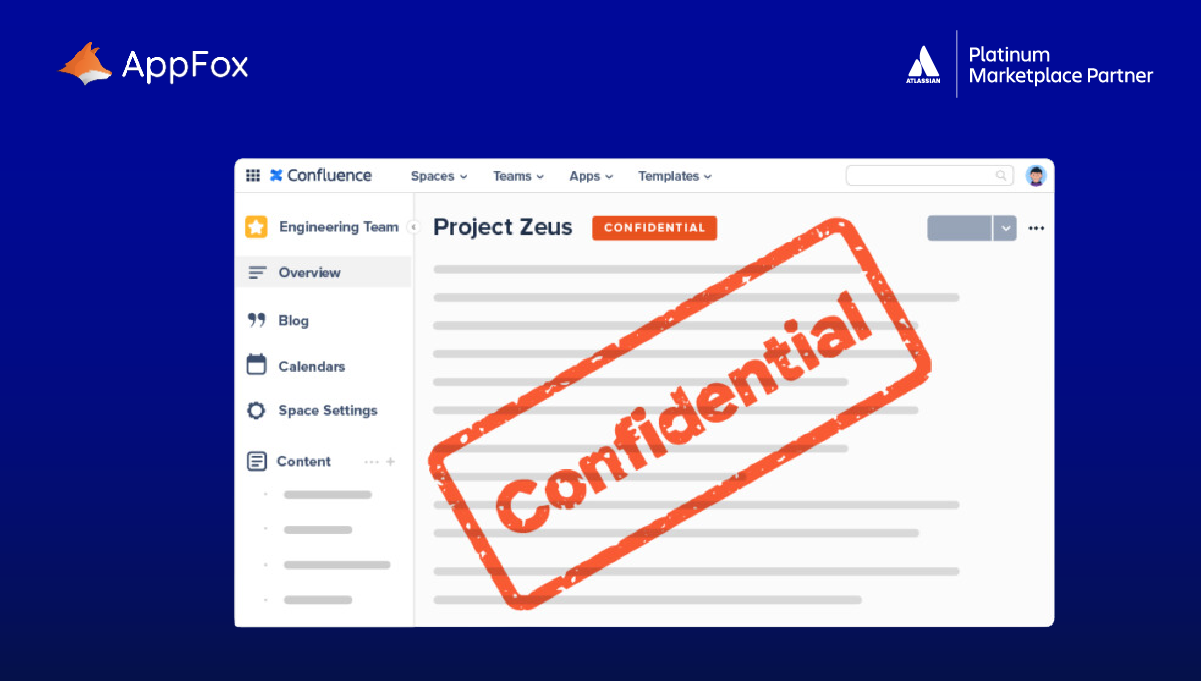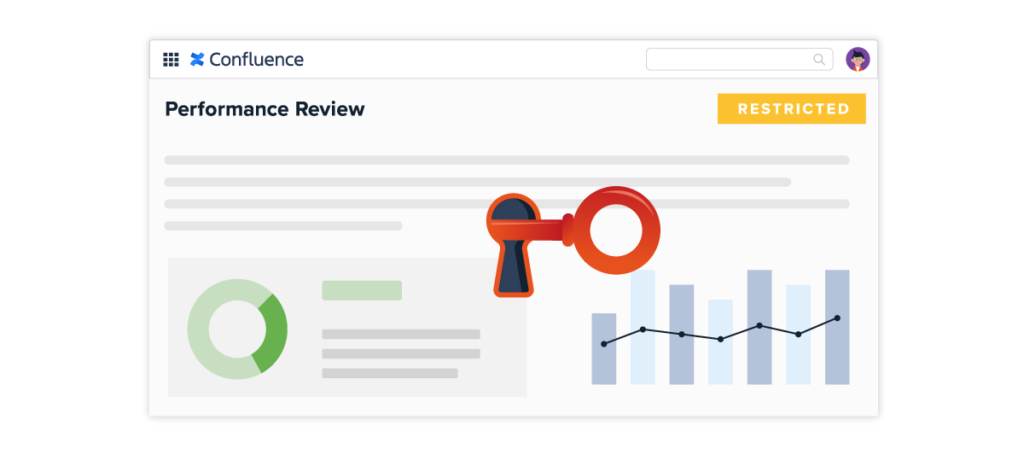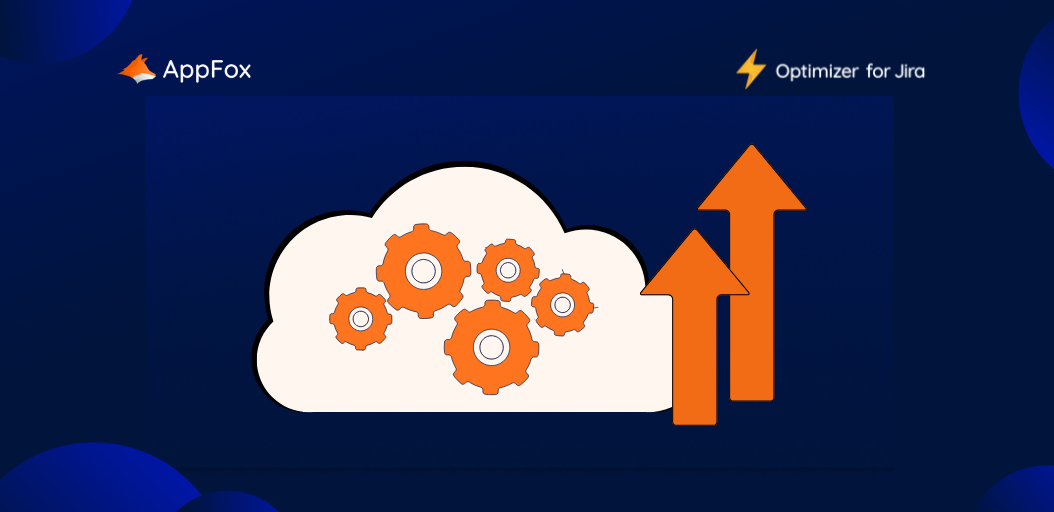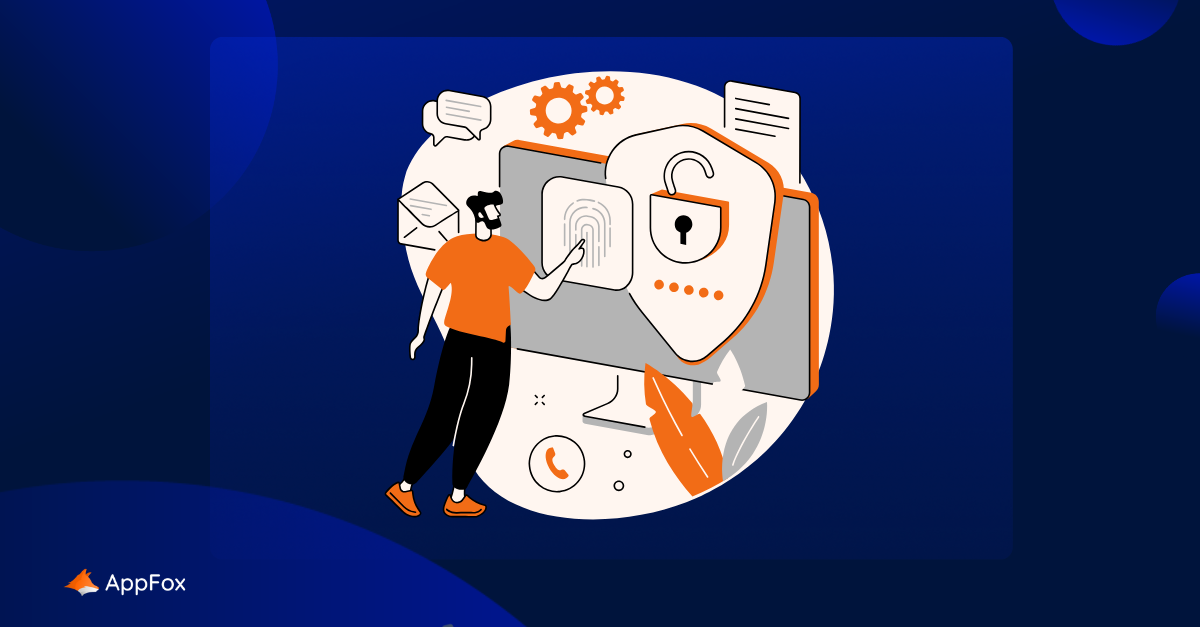We’d imagine your Confluence is home to hundreds, if not thousands, of pages. Right now, do you feel as though you have the right tools and processes in place to protect and manage all that information?
If the answer is no, don’t worry! This guide will walk you through everything you need to know to manage data classification in Confluence. In fact, this is the ultimate guide. It’s a long one, so we’d suggest grabbing a coffee and making yourself comfortable. ![]()
From native functionality within Confluence to the Atlassian Marketplace apps that extend and enhance existing functionality, today we’re sharing all you need to know about how you can classify and control your data.
We’ll also cover how data classification can fit into your organization’s wider Data Loss Prevention (DLP) strategy. Essentially, we’re aiming to bring you everything you need to keep your data safe and sorted in Confluence.
Confluence: A bit of background
In case you’re not yet using Confluence and are doing a little initial research, we’ll give you a speedy introduction. In a nutshell, Atlassian’s Confluence is one of the most popular document management tools out there.
We describe it as a supercharged, centralized knowledge base, where teams share information in the forms of pages. Focused on enhancing collaboration and teamwork, Confluence is a great tool when used in isolation, but it really excels when used between teams of people. ![]()
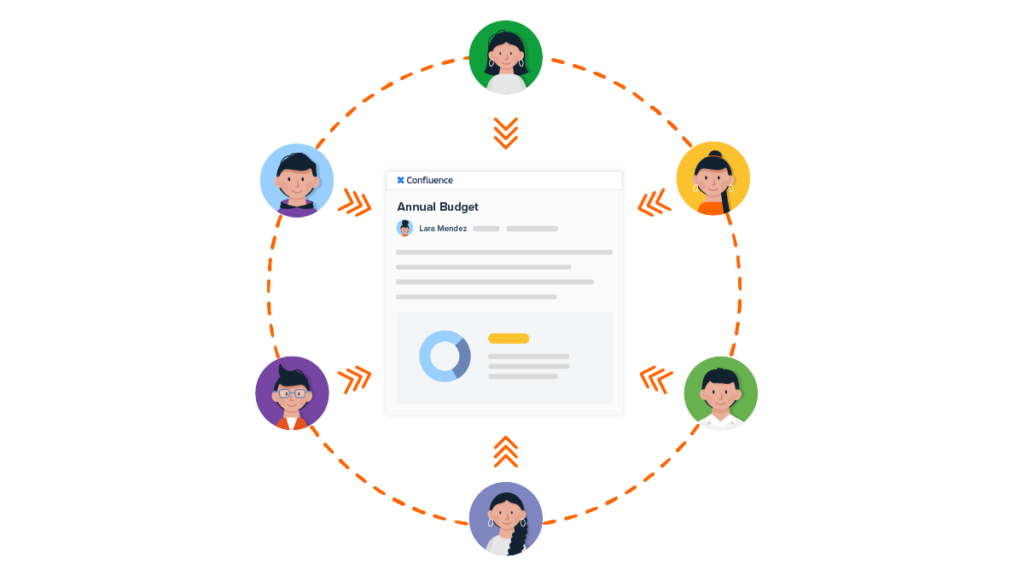
We’ve seen organizations generate anywhere between a few hundred and tens of thousands of pages every month. And as the amount of content grows, the way your information is managed, stored and shared becomes ever-more critical.
A key question is this: How do you know that all the data contained in your pages is appropriate to be shared in a collaborative platform? In most cases, the information is likely to pose little risk to your team or organization. But some documents are more sensitive (think employee records, legal documents or financial data) – and you need to make sure you can put safeguards in place to protect these.
One of these measures should be data classification (no surprises there!). So let’s get started.
In the next section, we’re going to deep dive into data classification and why it’s so important. We’ll then focus on how you can bring data classification to your Confluence.
Your guide to data classification
Let’s start with the basics first.
What is data classification?
Data classification is not simply sticking a label on your information. Instead, it’s a hierarchy of levels designed to help you identify and categorize your data based on the content and its perceived risk or sensitivity.
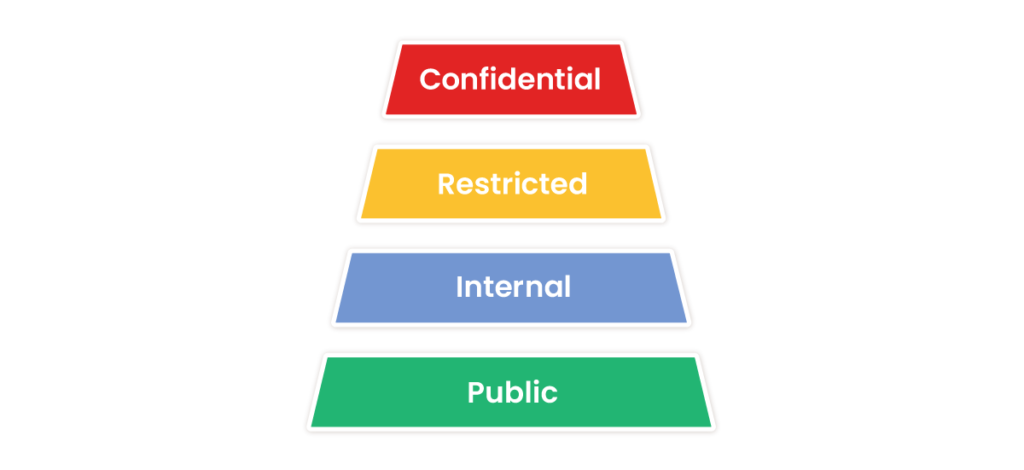
You can use a range of criteria to choose your data classification levels. These could include:
- Level of sensitivity
- Risk to your organization if exposed
- Regulatory standards or requirements linked to specific data types (e.g. special category data)
Once you apply classification levels to your information, you are then in a better position to start managing how your teammates and other stakeholders access, share and use it.
Data classification is just one practice in wider risk management, compliance and information security processes. (We’ll touch on this later when we look at Data Loss Prevention strategies.)
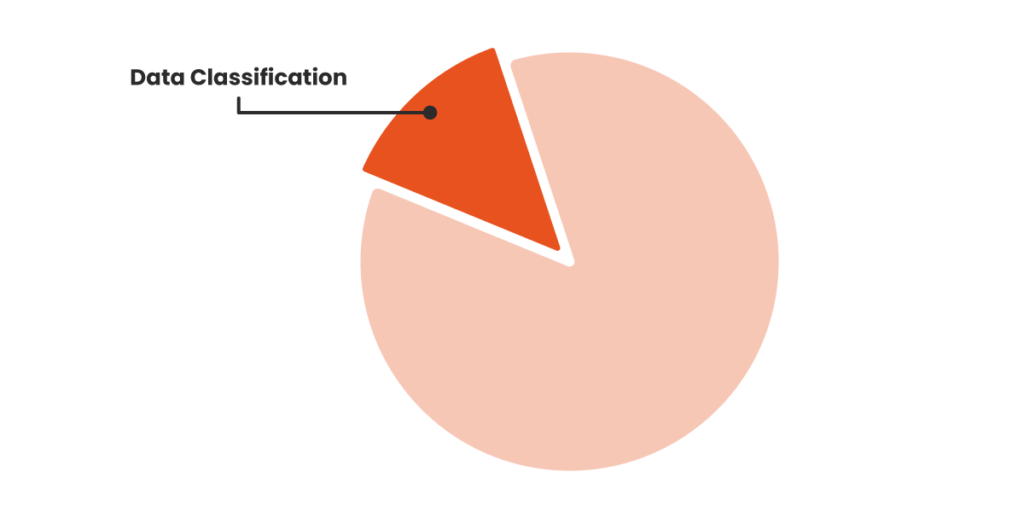
Your organization will almost certainly have document management and information security policies already. So, when you begin exploring how to classify your data, refer back to these policies to ensure your processes align with your organization’s wider approach. If in doubt, talk to your Legal, Information Security, or HR teams for further guidance.
Putting in place data classification may sound like a lengthy or complex process, but it really doesn’t need to be. In reality, if you’ve chosen simple classification levels, your team has bought into the process, and if you have the right technology supporting you, it should be fairly straightforward to maintain. Once in place, data classification provides long-term protection of your information and supports a culture of data sensitivity and consideration amongst your teammates.
And, as you’ll discover, we’ve got a heap of guidance to help you set it up in Confluence. We’ll start by explaining how to choose the appropriate data classification levels.
How should you choose your data classification levels?
Levels sit at the heart of data classification. These will often be driven by an organization’s document management policies or industry regulations, and many companies will operate a simple three or four-level classification structure such as the one below.
We commonly see levels like this:
- Public: Information that poses no risk to the organization if disclosed
- Internal: Information that poses low risk to the organization if disclosed
- Restricted: Information that poses a medium/high risk to the organization if disclosed
Generally, we’d encourage you not to create too many levels. Three or four are often sufficient for most organizations to manage their data effectively, and simple enough to encourage whole-team adoption. It’s worth bearing in mind, though, that various regulations and bodies provide different guidelines for data classification.
The GDPR, for example, uses these four levels of data classification:
- Public data
- Internal data
- Restricted data
- Confidential
The UK Government has its own unique structure:
- Official
- Secret
- Top Secret
Whilst in a completely different sector, Apple has created a classification framework for files created on devices which support data protection:
- Class A
- Class B
- Class C
- Class D
So, what should your data classification levels look like? In our experience, the three most important things to get right are sense, scope, and simplicity.

Sense: Do your levels make sense in the context of your organization and industry? (We doubt many companies would require ‘secret’ and ‘top secret’, for example!) We’d also encourage you to consider that external stakeholders may need to be aware of your classification levels (such as contractors or agencies). This is why universal terms like ‘public’ may be more effective than internal jargon.
Scope: Secondly, do your levels fully cover the range of information within your organization? You should have a clear idea about this if you undertake a data mapping exercise (head down to our ‘Top tips’ for more info on this).
Simplicity: Are your data classification levels straightforward? As we mentioned, a concise range with clear definitions will make it easier for your teammates to adopt and sustain.
Top tips for implementing a successful data classification strategy
Data classification hinges on a clear understanding of the types of information you possess.
To truly get to grips with your data, you need to spend time mapping, analyzing and identifying it. We’ve included our top tips and tasks to complete here. ![]()
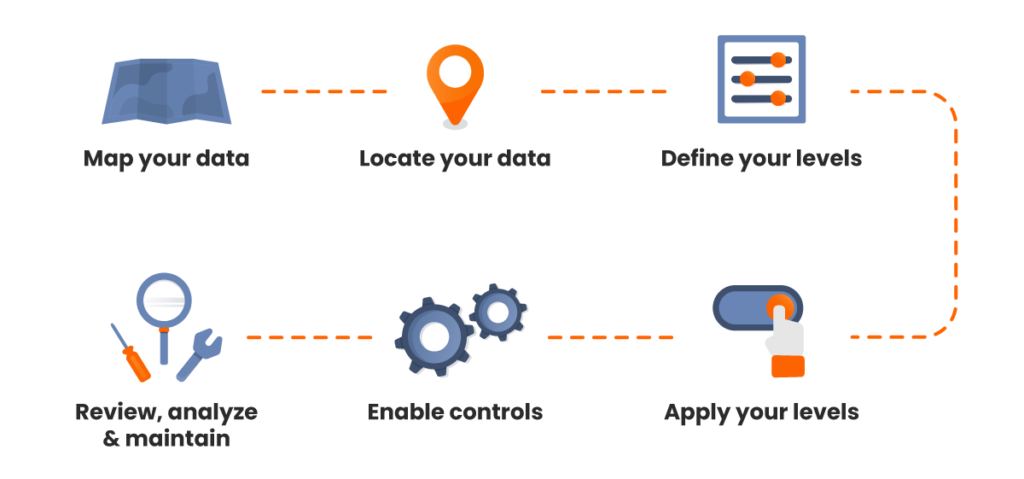
Do a data-mapping exercise: This is one of the most important steps in the data classification process. You have to understand the different types of data you have to define the various categories or classification levels you require.
It’s a good idea to involve people from various departments to get different perspectives across the organization – and who can provide insights into the legal and regulatory implications that govern how different types of information should be managed. These folks may be from your Legal, Information Security, or Compliance teams.
Locate your data: The chances are, in the context of this guide, that most of your information is housed in Confluence! But it is worth really considering where and how your data is located. Is it stored electronically or physically? Single location or multiple locations? Do your teammates use personal devices for work purposes? And how is your information protected in each instance?
Define your classification levels: As we touched on earlier, we’d recommend you keep these levels to a minimum because the greater the complexity, the more challenging it may be to adopt across teams and departments. For many companies, three to four classification levels would typically cover most of the types of data you have within Confluence.
After you’ve alighted on the right number of classification levels for your organization, the next step is to define which types of information fit into each category. Here you could provide some general examples to help your teammates (e.g. company policy = internal).
At this stage it’s also valuable to specify how the different classification levels align with your organization’s policies and procedures. Try to avoid jargon or policy-speak. To encourage company-wide adoption, your data classification process must be simple to understand and make sense at all levels.
You should assign some responsibility to various stakeholders to ensure that, once your classification procedure has been introduced, everyone follows it to the same standard.
Apply your classification levels: After defining your classification levels, you can now move on to applying them. It can help to pose questions to yourself and team. What would happen if the credit card details of your customers were to leak? (We guess a rather loud ‘AGH!’ would ring out). Any data which incurs this kind of reaction must be classed as ‘restricted’, for example.
But on a serious note, if you understand the potential consequences of a data leak or loss, it will help you choose the right data classification levels and the adequate protection needed.
Enable controls: Now it’s time to put the right protections in place. This may include access control and sensitive data detection – both features available in the Compliance for Confluence app (and which we explore in more detail here).
Analyze and maintain: This last step is critical to maintain high standards of data classification and management. Our world is constantly changing, so your data classification processes also need to evolve in response to changing threats or improved knowledge.
Regularly review your data classification process and perform regular audits, to assess whether your data classification system is still fit for purpose.
How important is data classification?
The answer to this is simple: Very!
But as this the ultimate guide to data classification, we should probably elaborate a little. Whether you have 100 or 100,000 pages in your Confluence, you and your teammates need structure and consistency in order to manage and protect all that data. At a base level, data classification is important because it establishes a system for managing this very scenario, right across your organization.
However, data classification’s value goes beyond the day-to-day information access and management.
Let’s start by stepping back and looking at the world in which we’re all working today.
Recent stats around data loss and breaches are, frankly, terrifying. We cover how data classification supports DLP strategies in the next section, but we’ll just share a few numbers first. Did you know that up to 94% companies who experience a data breach never recover? According to research compiled by Truelist, it can take almost nine months for organizations to identify and contain a data breach – and many never regroup from the resulting impact.

We’ve also seen fairly recent changes in legislation, such as the General Data Protection Regulation (GDPR) back in 2017, which has seen organizations across Europe refocus their attentions on data protection. Across the pond in the US, meanwhile, the California Privacy Rights Act came into force in 2020, with four other states now looking to introduce ‘GDPR-inspired statutes’ in 2023.
These new regulations, coupled with regular reports of high-profile ransomware attacks, data leaks and increasingly sophisticated hackers, mean we’re now in an era where information security is (or should be) a top priority for organizations big and small.
Within this landscape, employees, customers and partners will (or, again, should!) be asking companies how they will protect their data. A powerful data classification process should be one of your answers.
So, we’ve set the scene. Let’s now explore the value of data classification in a little more depth:
- Data classification enhances awareness and assessment skills: Data classification is an important process because it forces you to analyze the significance of each and every piece of information you have. During this process you’ll have to ask yourself: ‘What is the worst thing that could happen if this information became public?’ This level of questioning is not dissimilar to a data protection risk or impact assessment.
- It encourages a culture of sensitivity and confidentiality: Some data simply should not be shared outside of a few key team members. From salary details to business plans, sensitive data must be protected and access controlled. When you formally classify data like this as ‘confidential’ or ‘high risk’, it reinforces the importance of protecting it amongst your team members, and helps everyone to consider how they access and use such data (if at all). Crucially, you can then take action to protect it.
- Encourages accountability: Following an assessment and implementation of data classification levels, teammates will be more aware of the type of data they deal with and its value. It also helps them to understand their duties in protecting data from leaks or breaches.
- Your may unearth some hidden risks: By taking the time to review your data, there is a chance you will find sensitive information that you were previously unaware of. Whilst this can be unnerving, it does mean you can take action and safeguard it from loss or disclosure.
- Reduces the risk of liability: Data breaches can incur legal or financial liabilities. Data classification will help you identify higher risk information so you can put the right safeguards and controls to protect it. This minimizes the risk of exposure or disclosure which could result in legal action, financial penalties and reputational damage. (Nothing major, then
 )
) - Protects your intellectual property: Content such as project proposals or partnership agreements can become critical if not appropriately secured. Even seemingly innocent data can reveal valuable information to people outside of your organization if it is lost or disclosed.
- Establishes consistent processes: Ultimately, a robust and well managed data classification process establishes a framework for handling data in your organization. All team members should be confident as to which data they can access or use, and equally sure identifying which data needs greater restrictions or protection.
- Supports working towards regulations and accreditations: Whether you’re looking to become ISO certified, achieve other regulatory accreditations, or are simply completing a data protection audit for potential clients, it’s vital to demonstrate you have robust information security and compliance processes. Data classification is just one way to evidence this.
- Provides an opportunity to optimize and improve content: Once you organize, categorize and classify your data, your Confluence (or other platform) will be a much cleaner, more secure and more efficient placer to work! All together now: Tidy Confluence, tidy mind.

Hopefully we’re all on the same page after completing this section: We know what data classification is, how you can choose your levels, tips for implementing it and why it’s such an important process. Now it’s time to go on step beyond data classification, and take a look at wider DLP strategies.
What’s DLP, you ask? Read on…
How does data classification support Data Loss Prevention (DLP) strategies?
We’ll cover it all in this next section.
What is Data Loss Prevention?
Data Loss Prevention (DLP) encompasses the actions, tools and methods we can adopt to prevent the unauthorized disclosure of information. In other words: It’s how we try to stop data from being leaked, lost or stolen. Data classification should be a key part of your DLP strategy.
A quick clarification first. We use the following terms interchangeably when discussing data protection, but they’re all slightly different:
Data leak: Information is shared or exposed outside of your organization, and with those who are not authorized to see it. Data leaks are often accidental or non-malicious. They range from human error (say, someone inadvertently forwarding sensitive data over email), to software or database vulnerabilities.
Team training and robust data management and protection processes (including data classification!) are two key ways to prevent against data leaks. In tandem with this, ongoing system maintenance and security controls are vital.
Data loss: The irreparable loss of data which has been either removed from your system (whether accidentally or through malicious activity) or destroyed (this could be via a hardware failure, power outage or environmental factors).
To mitigate the risk of data loss, both physical and cyber security controls are essential (think threat protection, detection and response tools), alongside robust back-up and disaster recovery procedures.
Data breach: Whereas data leaks and losses refer to information leaving your systems, a data breach is when an external entity enters into them. Often, this is the result of a targeted and malicious attack.
At the time of writing, IT Governance reported there had been almost 700 data breaches alone this year, with over 600 million records compromised (220m were the result of a Twitter breach, reportedly 2023’s largest incident to date).
What should your DLP strategy include?
When implemented effectively, a Data Loss Prevention strategy should help to reduce the risk of the above. Each organization will have unique requirements, but as a rough guide, your DLP strategy should encompass:
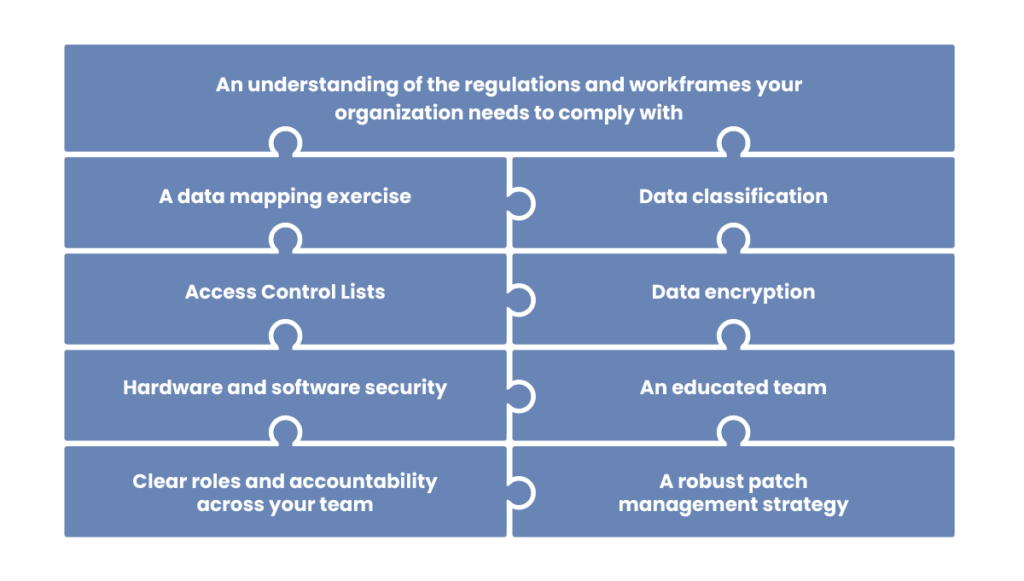
- An understanding of the regulations and frameworks your organization needs to comply with: From general regulations (like GDPR) to the more niche (say sector-specific certifications), you need to be clear on these requirements.
- A data mapping exercise: Where is your data stored? How is it used? Who has access to information? How does it flow in and out of your organization? This should include a special focus on sensitive data. This may be a lengthy process, and should involve stakeholders across your organization. Data mapping is also a crucial first step for data classification itself.
 Data classification
Data classification  : Yep, here it is – the star of today’s post! Once you have mapped and identified your data, you need to apply classification levels to it in order to manage and protect it. (If you skimmed over the last section, head back there now.)
: Yep, here it is – the star of today’s post! Once you have mapped and identified your data, you need to apply classification levels to it in order to manage and protect it. (If you skimmed over the last section, head back there now.)- Access Control Lists: Also known as ACLs, these are a set of rules which determine who (or what) has access to a certain system, object or data. This could include which software or third-party apps users are authorized to install on company hardware, role-based access and restrictions, or websites which teams are forbidden from accessing.
- Data encryption: All data should be protected by encryption, both in transit and at rest.
- Hardware and software security: We know this is a real catch-all term, and we could write an entire guide based solely on security tools and processes. But today we’re going to keep the focus tight on data classification, so we’ll just include this as a brief mention.
- A robust patch management strategy: Some of this may be automated, and some may be dependent on your team manually updating their devices and systems.
- Clear roles and accountability across your team: For example, who is your Data Protection Officer? (This is a requirement of the GDPR – other regulations may specify different roles).
- An educated team: We’ve mentioned this in relation to data classification already. We cannot emphasize enough the need for team buy-in and awareness. This extends to your wider DLP strategy.
Interestingly, despite the prevalence of cyber attacks, there has been a drop in businesses maintaining even the most basic information security practices. According to a recent UK Government report, the number of companies using password policies has dropped from 79% in 2021 to 70% in 2023, whilst only 66% are using network firewalls today (compared to almost 80% in 2021). These should be core processes and tools within any organization’s DLP, yet it seems many companies are risking loss, leaks and breaches by not including them.
According to the report, cyber security has dropped down on many companies’ priority lists. It is suggested that other concerns, such as the economy, have overtaken it. It’s tough out there at the moment but, please, if you’re one of these organizations, boost your information security and data protection back up close to the top if you can!
Why is DLP important?
It feels like every week there’s a new horror story about data breaches. From reputational damage, to the impact on victims, the repercussions of cyber attacks are far reaching. And with threat actors becoming increasingly sophisticated (or shameless), a strong DLP strategy has never been more important.
- Log into your Confluence instance as an Admin, click the admin dropdown and choose ‘Atlassian Marketplace’. The ‘Manage add-ons’ screen will load.
- You then need to click ‘Find new apps’ or ‘Find new add-ons’ from the left-hand side of the page.
- Search for Compliance for Confluence.
- Select ‘Try free’ to begin a new trial or ‘Buy now’ to purchase a license. You’ll be prompted to log into MyAtlassian. Compliance for Confluence will then begin to download.
- Enter your information and click ‘Generate license’ when redirected to MyAtlassian.
- Finally, click ‘Apply license’ and you should be done!
Tips to maintain strong data classification processes in Confluence
We’ll finish up today with a few final pearls of wisdom,
It’s all well and good implementing a thorough data classification strategy to prevent data breaches and legal liabilities. However, this isn’t just a one-and-done activity. You and your team must complement this work with a review and analysis phase of your data classification strategy.
Regulations, threats and knowledge are always changing. So, we need to keep pace.
Compliance for Confluence will provide you with a broad overview of the Confluence pages that still need classification. This will enable you to prompt colleagues to classify their pages and close all the gaps.
In addition, Compliance for Confluence generates reports for you to review all the Spaces and ensure that everything is classified appropriately.
You can schedule regular scans to ensure you’re aware of sensitive data housed within your Confluence. And, as ever, crucially you can take steps to protect and manage it.
And make sure to regularly review your organization’s data management policies and ensure you align with their requirements re: audits and reviews.
But the work’s not all down to you. We (the AppFox team) are also continually exploring, innovating and expanding. We’re not ones to sit still, and we’re excited to bring fresh developments and enhancements to Compliance for Confluence, and our range of other apps.
In closing…
If you’ve made it to the end, thanks for sticking around (and great work – this really was the ULTIMATE guide).
You’re probably on the same page as us: Data protection and information security really is of paramount importance – and hopefully you’re now aware that Compliance for Confluence is a valuable tool to support your ongoing data management and protection.
You can get access to a free 30-day trial of Compliance for Confluence via the Atlassian Marketplace.
- Open the Confluence page you want to classify. Can you see the ‘Pending Level’ indicator at the top of the page?
Of course, if a default classification level has already been applied (or you’re changing an existing level), you won’t see ‘Pending Level’. Instead, you’ll see the existing classification level lozenge. - Click on the indicator/lozenge to add or change your chosen classification level.
(If you already had restrictions enabled based on a previous classification level, the page will then refresh to show any new restrictions.) - To see an audit trail of levels, hit the ‘…’ menu and click on ‘Classification History’.
